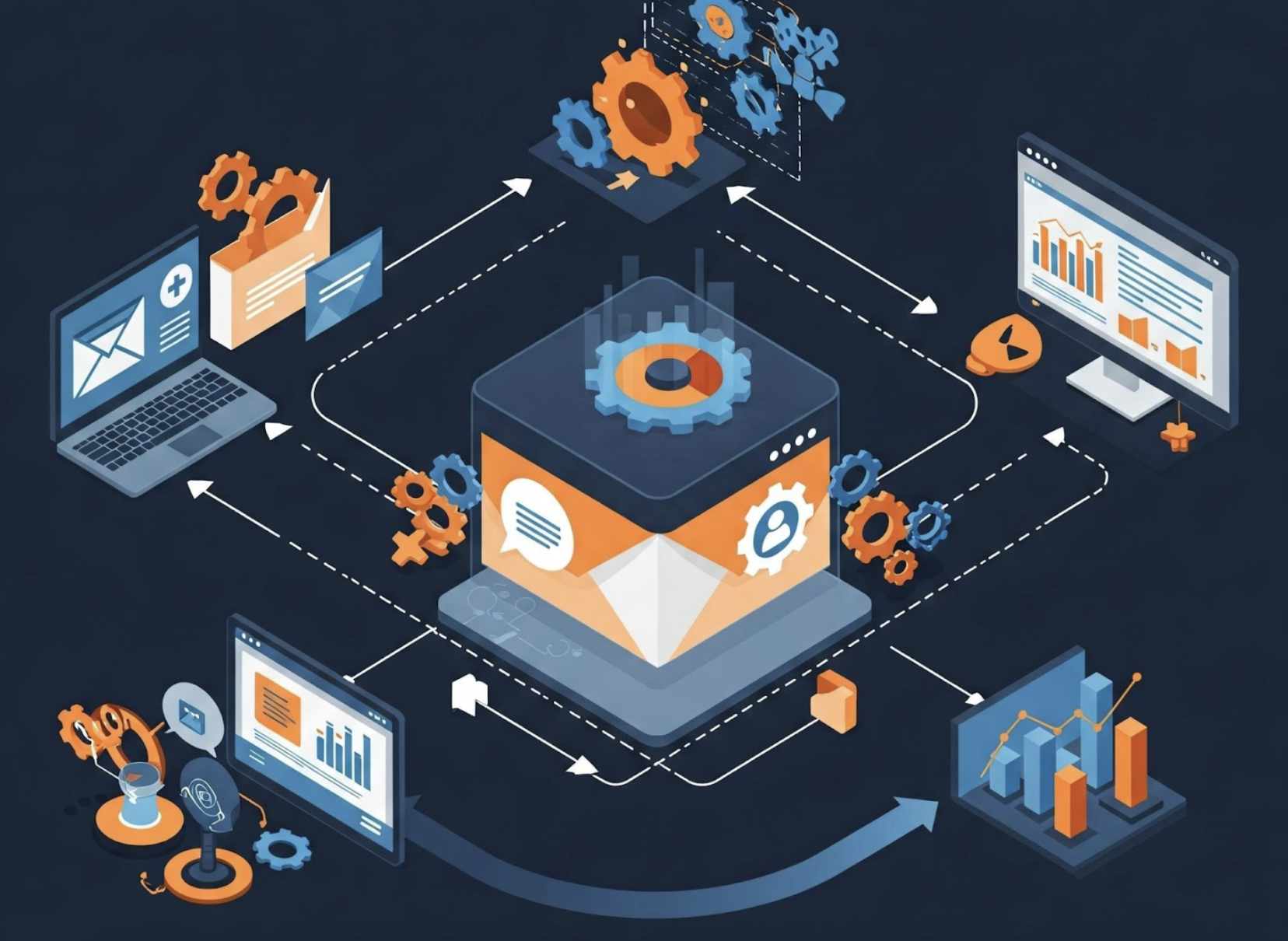Introduction
Imagine the day-to-day of a traditional marketing department in a growing company. The team is constantly swamped with manual tasks: scheduling email sends, managing customer databases, creating performance reports, and answering repetitive queries.
 Deadlines are shortened, demands are increased, and staff shortages become a recurring problem. In this context, it is common for marketing managers and leaders to face wasted time and money, lower operational efficiency, and general frustration within the team.
Deadlines are shortened, demands are increased, and staff shortages become a recurring problem. In this context, it is common for marketing managers and leaders to face wasted time and money, lower operational efficiency, and general frustration within the team.
For example, consider an e-commerce company that launches special promotions every month. Without automation, the marketing team must manually segment its audience, schedule individual email sends, and follow up with each customer who interacts with the campaign.
The result is a tedious, error-prone process with low personalization capabilities.
Now, with a marketing automation solution, these steps can be executed efficiently and automatically: emails are sent based on user behavior, customers receive personalized messages, and the team can analyze the campaign's impact in real time without additional effort.
Marketing automation emerges as a key solution to optimize processes, improve customer experience, and maximize results. In this whitepaper, we will explain the main changes your business can achieve by implementing marketing automation.
